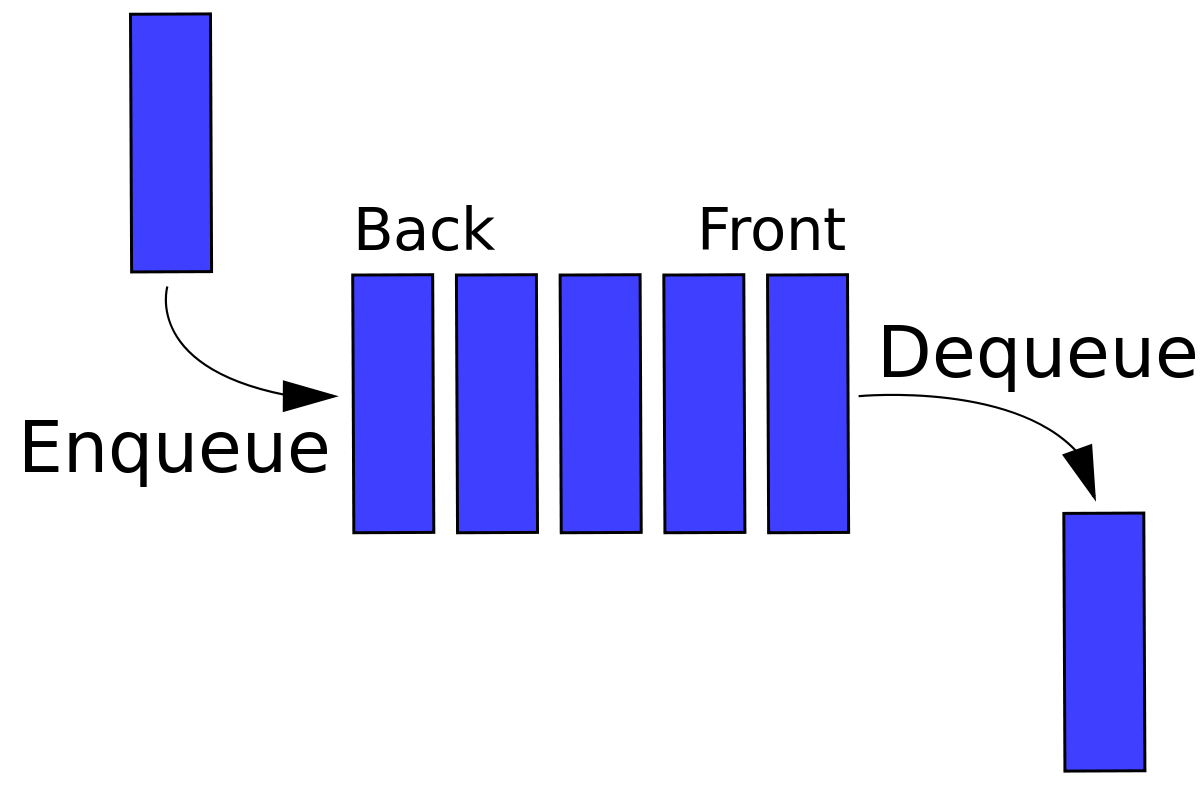基礎資料結構-串列(List)
串列(list)是有限的有序值的集合。
串列屬性:
- 串列的大小. 它表明串列中有多少元素。
- 可以檢索特定標號(index)的元素。
- 可以按照標號增加的順序遍歷串列。
- 可以改變特定標號的元素的值,同時不影響其他元素。
- 可以向特定標號插入一個元素。後面的元素標號增加1。
- 可以在特定標號刪除一個元素。後面的元素標號減少1。
- 串列的「頭」「尾」、「前」「後」
- 串列的「頭」(head),是指指向串列的第一個元素的指標或結點;因此,串列的「尾」(tail),是指遍歷串列到達的最後一個元素。
- 前向串列(forward list,如C++標準模板庫的實現 )是指一個單向串列,從頭部開始,每個節點有一個next指標指向緊鄰的下一個節點。
串列(List)的實作
- 陣列串列 (Array List)
- 鏈結串列 (Linked List)

串列(List)的運作(operator)
/** List ADT */
public interface List<E> {
/** Remove all contents from the list, so it is once again
empty. Client is responsible for reclaiming storage
used by the list elements. */
public void clear();
/** Insert an element at the current location. The client
must ensure that the list’s capacity is not exceeded.
@param item The element to be inserted. */
public void insert(E item);
/** Append an element at the end of the list. The client
must ensure that the list’s capacity is not exceeded.
@param item The element to be appended. */
public void append(E item);
/** Remove and return the current element.
@return The element that was removed. */
public E remove();
/** Set the current position to the start of the list */
public void moveToStart();
/** Set the current position to the end of the list */
public void moveToEnd();
/** Move the current position one step left. No change
if already at beginning. */
public void prev();
/** Move the current position one step right. No change
if already at end. */
public void next();
/** @return The number of elements in the list. */
public int length();
/** @return The position of the current element. */
public int currPos();
/** Set current position.
@param pos The position to make current. */
public void moveToPos(int pos);
/** @return The current element. */
public E getValue();
}
鏈結串列 (Linked List)
鏈結串列是由許多相同資料型態的項目,所組成的有限序列。和陣列不同之處是鏈結串列使用動態記憶體配置來存放資料, 並用指標」(pointer) 連結各個項目。我們知道在資料結構的領域中,主要分成兩種主幹:靜態資料結構及動態資料結構。而鏈結串列與指標(pointer)變數, 則是動態資料結構的核心組成。 鏈結串列是由一個或一個以上的 「節點」(node)所組成,每一個節點至少會有兩個或兩個以上的欄位,分別存放資料(Data)及指標(Pointer)
基礎資料結構-堆疊(Stack)
限制只在串列(list)的一端進行操作,而且按照『後進先出(LIFO)』

堆疊操作: 堆疊資料結構使用兩種基本操作:推入(push)和彈出(pop): 推入:將數據放入堆疊的頂端(陣列形式或串列形式),堆疊頂端top指標加一。 彈出:將頂端數據資料輸出(回傳),堆疊頂端資料減一。
堆疊特點: 先入後出,後入先出。 除頭尾節點之外,每個元素有一個前驅,一個後繼。
基礎資料結構-佇列(Queue)
佇列只允許在串列後端(稱為rear)進行插入操作,在串列前端(稱為front)進行刪除操作。,而且按照『先進先出(FIFO)』

佇列操作:__ 佇列資料結構使用兩種基本操作:插入元素EnQueue和刪除元素DeQueue: 插入元素:將數據放入佇列的後端(陣列形式或串列形式)。 刪除元素:將佇列的前端輸出。
C語言的堆疊實作(陣列)
#include <stdio.h>
#include <stdlib.h>
#include <stdbool.h>
#define stack struct Stack
#define STACK_POP_ERR 42
/* 堆疊資料結構 堆棧數據結構 */
struct Stack
{
int val[10]; // 陣列空間
int top; // 堆疊頂端指標(棧頂)
};
/* 檢查堆疊是否為空 */
bool empty(stack *stk) { return stk->top == 0; }
/* 推入資料 */
void push(stack *stk, int x)
{
stk->top=stk->top+1;
stk->val[stk->top]=x;
}
/* 彈出並返回資料 */
int pop(stack *stk)
{
if(empty(stk))
return STACK_POP_ERR; // 不能彈出
else
{
stk->top=stk->top-1;
return stk->val[stk->top+1];
}
}
int main()
{
// 宣告並初始化資料結構空間
stack stk;
stk.top=0;
// 推入四個
push(&stk, 3);
push(&stk, 4);
push(&stk, 1);
push(&stk, 9);
// 彈出三個
printf("%d ", pop(&stk));
printf("%d ", pop(&stk));
printf("%d ", pop(&stk));
return 0;
}
C語言的佇列實作(陣列)
#include<stdio.h>
#include<stdlib.h>
/*佇列資料結構*/
struct Queue
{
int Array[10];//陣列空間大小
int head;//前端(front)
int tail;//後端(rear)
int length;//佇列長度 //將其視為當前资料大小,並且使用這個成員判斷滿或空
};
/*資料加入佇列*/
void EnQueue(struct Queue *Queue1,int x)
{
Queue1->Array[Queue1->tail]=x;
if(Queue1->tail+1==10)//Queue1->length改為空間大小10
{
Queue1->tail=0;//1改為0
}
else
{
Queue1->tail=Queue1->tail+1;
//Queue1->length=Queue1->length+1;//這行邏輯上有問題 //Modify By pcjackal.tw //這行放於外面
}
Queue1->length=Queue1->length+1;//當前個數增1
}
/*資料移出佇列*/
int DeQueue(struct Queue *Queue1)
{
int x=Queue1->Array[Queue1->head];
if(Queue1->head+1==10)//空間大小10
{
Queue1->head=0;
}
else
{
Queue1->head=Queue1->head+1;
}
Queue1->length=Queue1->length-1;//移出后減少1
return x;
}
/*佇列操作*/
int main()
{
struct Queue *Queue1=malloc(sizeof(struct Queue));//建立資料結構
Queue1->length=0;//新增長度//10改為0,初始狀態
Queue1->head=0;//必須要先初始化
Queue1->tail=0;//必須要先初始化
EnQueue(Queue1,5);//將5放入佇列
EnQueue(Queue1,8);//將8放入佇列
EnQueue(Queue1,3);//將3放入佇列
EnQueue(Queue1,2);//將2放入佇列
printf("%d ",DeQueue(Queue1));//輸出佇列(5)
printf("%d ",DeQueue(Queue1));//輸出佇列(8)
printf("%d ",DeQueue(Queue1));//輸出佇列(3)
system("pause");
}
C語言的堆疊實作(鏈結串列)
/* 链栈的结构定义 */
typedef struct {
SLink top; // 棧頂指針
int length; // 棧中元素個數
} Stack;
// 构造空栈 S
void InitStack (Stack &S)
{
S.top = NULL; // 設棧頂指針的初值為"空"
S.length = 0; // 空棧中元素個數為0
}
// 如果指针反过来从栈底到栈顶的话,删除栈顶元素时,为修改其前驱指针,需要从栈底一直找到栈顶。
// 在棧頂S 之上插入元素e為新的棧頂元素,並返回成功與否
bool Push (Stack &S, ElemType e) {
p = new LNode; // 建新的結點
if(!p)
return false; // 存儲分配失敗
p -> data = e;
p -> next = S.top;// 鏈接到原來的棧頂
S.top = p; // 移動棧頂指針
++S.length; // 棧的長度增1
}
// 在链栈的类型定义中设立“栈中元素个数”的成员是为了便于求得栈的长度。
// 刪除S 棧頂且以e 返回其數值,返回成功與否
bool Pop (Stack &S, SElemType &e)
{
if (!S.top)
return false;
else
{
e = S.top -> data; // 返回棧頂元素
q = S.top;
S.top = S.top -> next; // 修改棧頂指針
--S.length; // 棧的長度減1
delete q; // 釋放被刪除的結點空間
return true;
}
}
C語言的佇列實作(循環佇列)
/* 隊列的順序存儲結構(循環隊列) */
#define MAX_QSIZE 5 /* 最大隊列長度+1 */
typedef struct
{
QElemType *base; /* 初始化的動態分配存儲空間 */
int front; /* 頭指針,若隊列不空,指向隊列頭元素 */
int rear; /* 尾指針,若隊列不空,指向隊列尾元素的下一個位置 */
}SqQueue;
/* 循環隊列的基本操作(9個) */
void InitQueue(SqQueue *Q)
{ /* 構造一個空隊列Q */
Q->base=malloc(MAX_QSIZE*sizeof(QElemType));
if(!Q->base) /* 存儲分配失敗 */
exit(OVERFLOW);
Q->front=Q->rear=0;
}
void DestroyQueue(SqQueue *Q)
{ /* 銷毀隊列Q,Q不再存在 */
if(Q->base)
free(Q->base);
Q->base=NULL;
Q->front=Q->rear=0;
}
void ClearQueue(SqQueue *Q)
{ /* 將Q清為空隊列 */
Q->front=Q->rear=0;
}
Status QueueEmpty(SqQueue Q)
{ /* 若隊列Q為空隊列,則返回TRUE;否則返回FALSE */
if(Q.front==Q.rear) /* 隊列空的標誌 */
return TRUE;
else
return FALSE;
}
int QueueLength(SqQueue Q)
{ /* 返回Q的元素個數,即隊列的長度 */
return(Q.rear-Q.front+MAX_QSIZE)%MAX_QSIZE;
}
Status GetHead(SqQueue Q,QElemType *e)
{ /* 若隊列不空,則用e返回Q的隊頭元素,並返回OK;否則返回ERROR */
if(Q.front==Q.rear) /* 隊列空 */
return ERROR;
*e=Q.base[Q.front];
return OK;
}
Status EnQueue(SqQueue *Q,QElemType e)
{ /* 插入元素e為Q的新的隊尾元素 */
if((Q->rear+1)%MAX_QSIZE==Q->front) /* 隊列滿 */
return ERROR;
Q->base[Q->rear]=e;
Q->rear=(Q->rear+1)%MAX_QSIZE;
return OK;
}
Status DeQueue(SqQueue *Q,QElemType *e)
{ /* 若隊列不空,則刪除Q的隊頭元素,用e返回其值,並返回OK;否則返回ERROR */
if(Q->front==Q->rear) /* 隊列空 */
return ERROR;
*e=Q->base[Q->front];
Q->front=(Q->front+1)%MAX_QSIZE;
return OK;
}
void QueueTraverse(SqQueue Q,void(*vi)(QElemType))
{ /* 從隊頭到隊尾依次對隊列Q中每個元素調用函數vi() */
int i;
i=Q.front;
while(i!=Q.rear)
{
vi(Q.base[i]);
i=(i+1)%MAX_QSIZE;
}
printf("\n");
}
習題
1.撰寫程式hw7a, 執行6個堆疊操作: Push(5), Push(3), Push(10), Push(2), Push(7),Pop()後,由堆疊頂端依序列印出元素 2.設計程式hw7b, 執行6個佇列操作: EnQueue(5), EnQueue(3), EnQueue(10), EnQueue(2), EnQueue(7),DeQueue(), 由佇列前端依序列印出元素